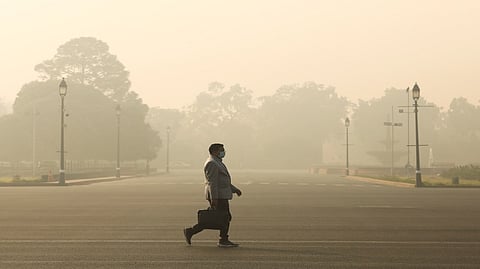

CHENNAI: A new study published by The Lancet Planetary Health Journal says that in 2019, India had witnessed the highest number of premature deaths compared to any other country in the world, on account of pollution of all types. As many as 23.5 lakh people have lost their lives to this man-made pain point, which also includes about 16.7 lakh fatalities caused specifically by air pollution, in 2019. Among those who died due to the fallout of air pollution, the maximum number of deaths 9.8 lakh cases — were attributed to ambient PM2.5 pollution, essentially tiny particles in the air that are under 2.5 microns in width. Approximately 6.1 lakh people died from household air pollution. Across the world, pollution in any of its forms contributed to nine million deaths which is essentially the equivalent of one in six deaths worldwide.
In the backdrop of World Environment Day that was observed last week, it might be important to view these statistics in the context of India. Experts have highlighted the fact that India’s PM2.5 pollution, recorded at 83 micrograms per cubic metre in 2019, is way above the WHO guidelines of 10 microgram per cubic metre in 93 per cent area of the country. The guideline value has been further tightened to 5 microgram per cubic metre. However, vehicular pollution is not even the topmost factor that lies at the heart of such a massive fatality count in air pollution.
The numbers are nothing short of staggering for India where about 53,700 new vehicles are being registered every single day. The government and private enterprises might claim that they are working on a war footing to ensure India’s transition to green mobility. But the fact remains that considering the state of public transport in many cities in the country, a significant chunk of the population still opts for personal vehicles of a heavily polluting kind, when it comes to mitigating their daily commute needs. Take the example of Tamil Nadu, which as per 2021 figures has upwards of 3 crore vehicles on its roads. Nearly 20% of these or 60 lakh vehicles are commuting across Chennai’s roads. And we wonder why we take so long to get from one point to the other, even on a weekend.
The addition of private vehicles on Chennai’s road is offset by a stagnation in the state of Chennai’s bus fleet, the MTC which had not commissioned new buses over the past decade despite the city’s population growing by 30%. Around 3,100 new buses need to be pressed into action to meet the requirements of public transport while 2,500 ageing buses need to be repaired. And the absence of qualitative last mile connectivity even hampers the desires of the well-heeled in opting for transit options such as the Chennai Metro Rail.
In spite of the presence of a National Clean Air Program and State Pollution Control Boards that are fully empowered to impose and enforce emission standards, the results of the intervention have been limited and uneven. Economic losses from pollution sets India back by 1% of its GDP annually. However, the funding as well as attention directed towards this problem has only witnessed marginal improvements. According to stakeholders who have a skin in the game, the need for a robust centralised administrative framework to control air pollution, and improve air quality on the whole is being acutely felt. And the sooner that we have these guardrails in place, the faster we can transition from fossil fuels to a green tomorrow.
Are you in Chennai? Then click here to get our newspaper at your doorstep!
Visit news.dtnext.in to explore our interactive epaper!
Download the DT Next app for more exciting features!
Click here for iOS
Click here for Android